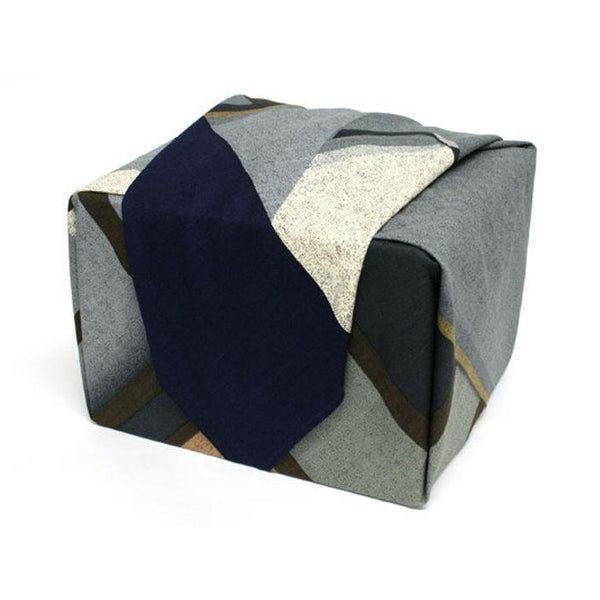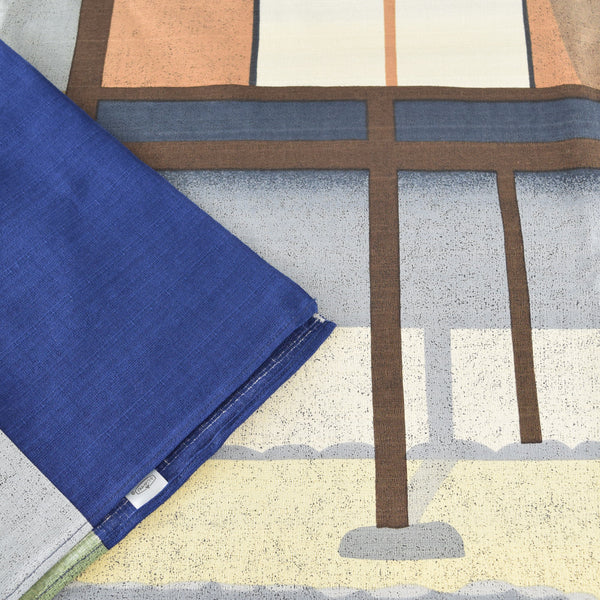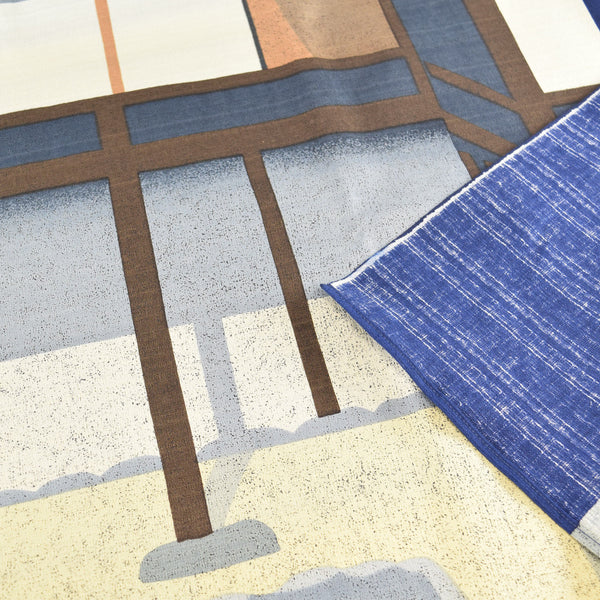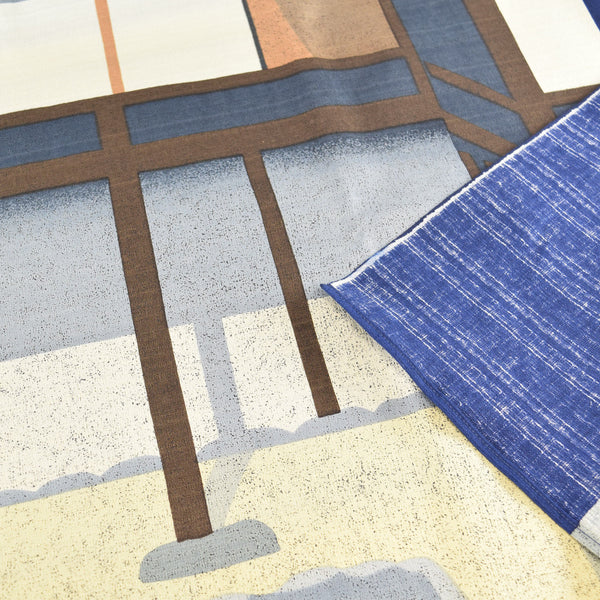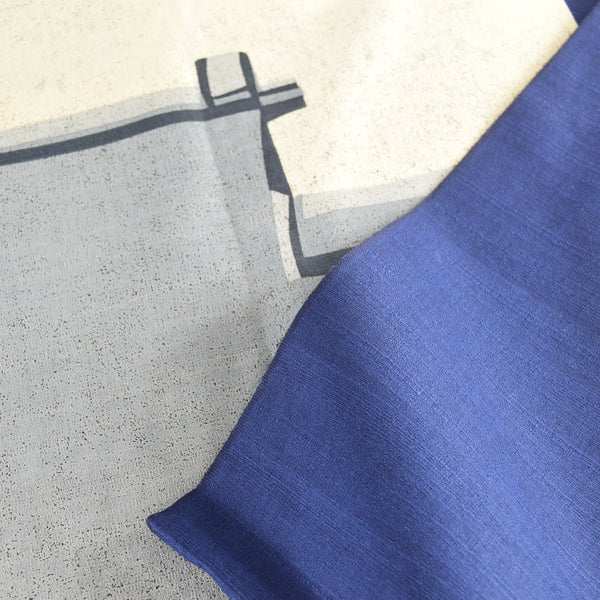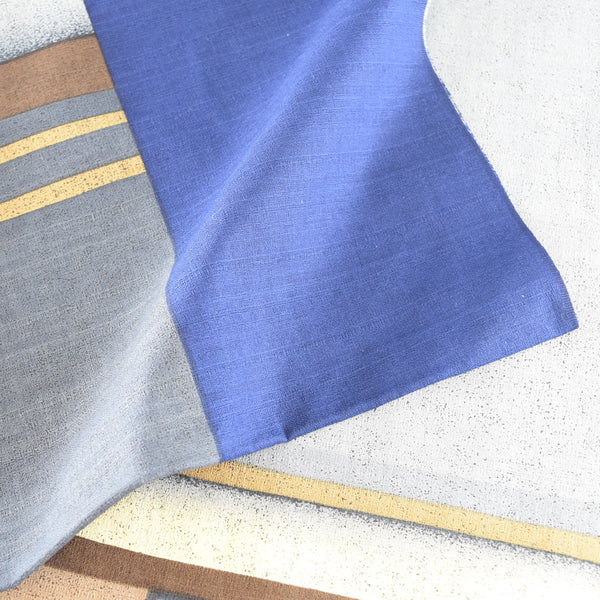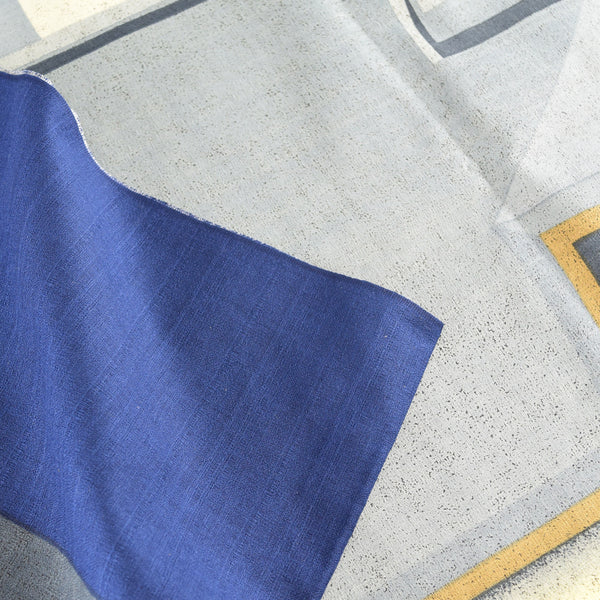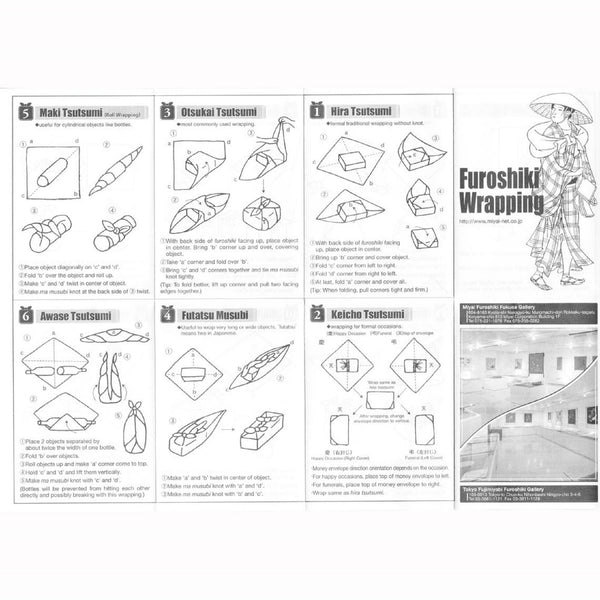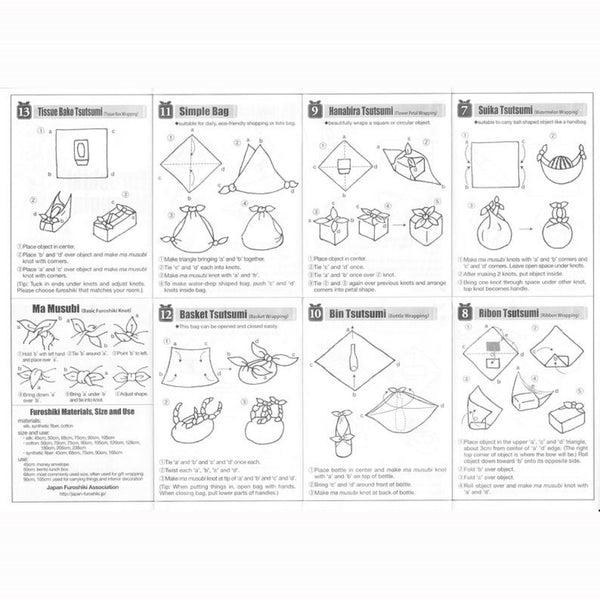105cm Cotton Furoshiki - Kyoto 4 Patterns
13-4704105cm Cotton Furoshiki - Kyoto 4 Patterns
Characteristics of the product
Material : Cotton100%
Size : 105cm x 105cm
Pattern : Tō-ji, Katsura Imperial Villa, Giou-ji Temple, Sanzen-in
Handmade in Kyoto, JAPAN
Kyoto scenery patterns
-Tō-ji (東寺 Tō-ji) (East Temple) is a Buddhist temple of the Shingon buddhist school in Kyoto, Japan. There was once an affiliated temple, Sai-ji (West Temple) and, together, they stood alongside the Rajōmon, that is to say the gate to the Heian capital. It was formerly known as Kyō-ō-gokoku-ji (教王護国寺 The Temple for the Defense of the Nation by Means of the King of Doctrines) which indicates that it previously functioned as a temple providing protection for the nation. Tō-ji is located in Minami-ku near the intersection of Ōmiya Street and Kujō Street, southwest of Kyōto Station.
-Giou-ji Temple (祇王寺)is a modest thatched hut surrounded by a bamboo grove and maple trees. Making its appearence in "The Tale of the Heike", known as the convent of tragic love, is where the dancer Gio, fallen out of Taira no Kiyomori's favor, fled with her mother and younger sister to become nuns.
Giou-ji Temple is located in the temple precincts of the former Oujyo-in Temple and is said that it was founded by Honen Shonin's disciple Ryochin. The spacious temple grounds of Oujyo-in Temple, which ranged up and down the mountain, later fell into dilapidation, and only the modest convent remained, which later came to be known as Giou-ji Temple.
-Sanzen-in (三千院) is a Tendai school monzeki temple in Ōhara, about an hour north of central Kyoto. The road from Ohara bus stop to Sanzen-in is lined with shops and restaurants catering attracting temple visitors, in the vicinity there are also few minor temples. Sanzen-in Temple itself has large temple grounds and a variety of buildings, gardens and walking paths.
-Katsura Imperial Villa (Katsura Rikyu桂離宮) is a historic garden and residence located in Kyoto, Japan. Known as a masterpiece of Japanese culture and garden design, this site symbolizes the aristocratic culture of Japan during the Edo period. Katsura Rikyu features beautiful gardens, traditional Japanese architecture, and stunning landscapes, providing visitors with a serene and captivating space.
About furoshiki
In Japan, Wrapping cloths are a tradition (known as furoshiki).
They are a fabulous, zero waste way of wrapping anything from produce and wine bottles to clothes & gifts. Furoshiki embraces the philosophy of eco-friendly living by challenging us on how many items we really need. This beautiful and ingenious art allows one object to have many uses simply by folding and tying the cloth in a different way.
While Japanese culture is not alone in using fabric wrapping, furoshiki has a distinctive style reflecting Japanese interest in ceremony, beauty, multi-functional objects and thoughtfulness in detail as an approach to everyday living.
Cloth wrappings have been used for over 1200 years in Japan and the word "furoshiki", meaning "bath spread", dates back to the Edo period (1603-1868) when the cloths were commonly used in bath houses to wrap clothes and as a bath mat.
Over time, the Japanese developed a multitude of uses and patterns that are both elegant and functional. One furoshiki cloth can be used as:
a gift wrapping;
a bag for shopping;
a handbag decoration;
a picnic hamper;
a tablecloth;
a household decor;
a scarf, belt or bandana;
a way of wrapping clothes when travelling
In our store, there are many patterns you can choose, if you have any questions, please feel free to contact us.
※ The color may differ from the actual one depending on the coloration condition of the monitor.
Further resourches
※Import duties, taxes, and charges are not included in the item price or shipping charges.These charges are the buyer's responsibility.
Please check with your country's customs office to determine what these additional costs will be prior to bidding/buying.
发货方式(全球)
【我们能使用联邦快递或EMS快递发货,因此邮费通常指快递邮费。请在订购时注明您的电话号码。谢谢。 】
我们使用联邦快递、日本邮政、EMS发货。
几乎所有商品都使用标准航空邮件寄送,附带物流跟踪和保险。
-
处理时间
我们为发货准备订单所需的时间各不相同。
如果产品有库存,我们通常会在 7 天内发货。
如果您需要定制或商品需要生产,则需要更多时间。
-
预计发货时间
-
日本:2-7 个工作日
-
北美:1-2 周
-
欧洲:1-2 周
-
澳大利亚、新西兰和大洋洲:1-2 周
-
亚太地区:1-2 周
我们将尽最大努力达到这些预计发货时间,但无法百分百保证。实际送货时间取决于您选择的送货方式。
海关和进口税
买家需承担任何可能适用的关税和进口税。对于因海关原因造成的延误,本店不承担责任。

































